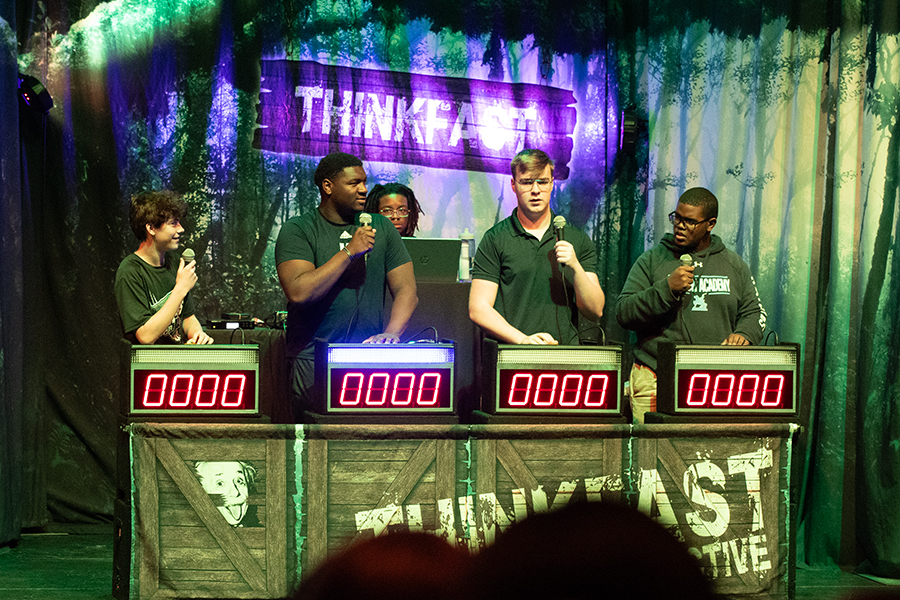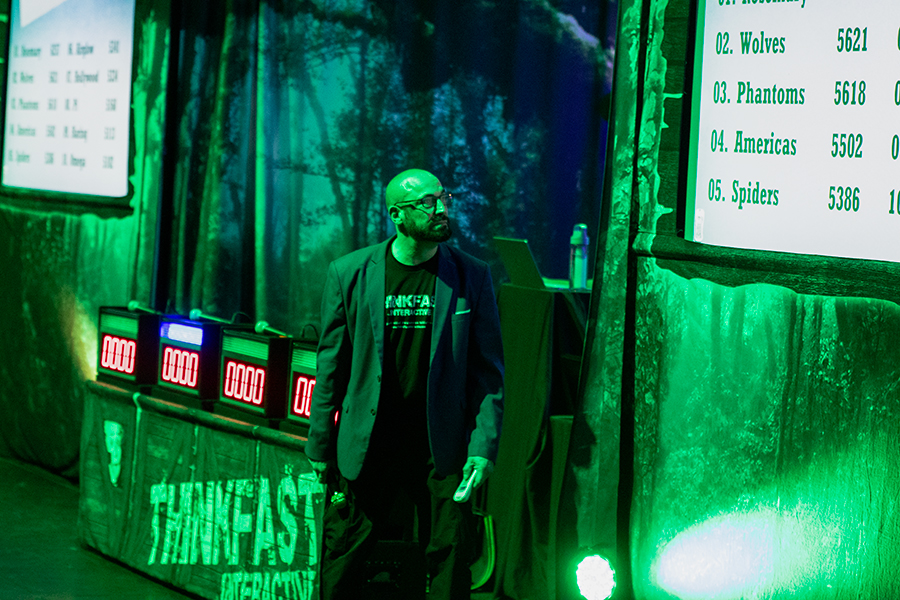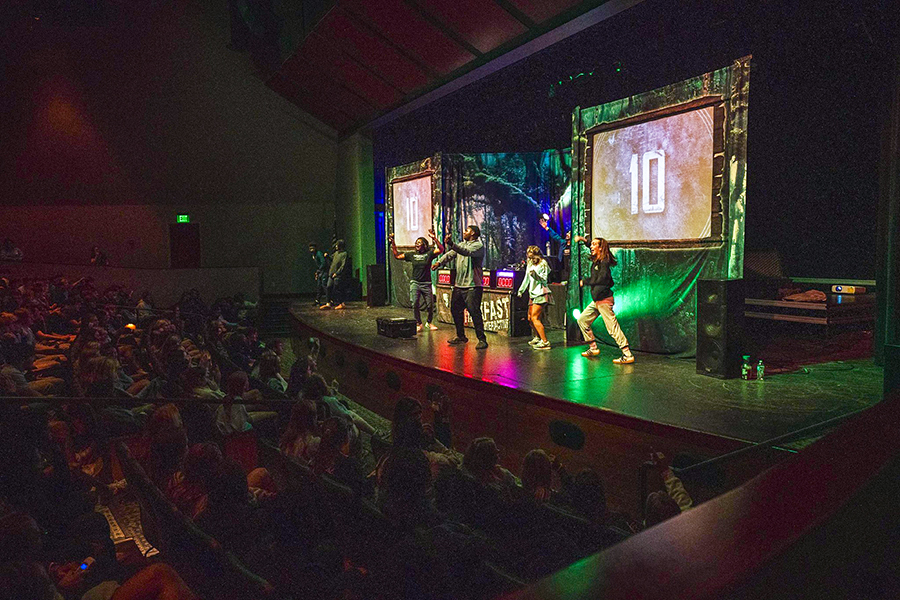

Leaders of the Nissan North America and Thinkfast Interactive Awareness Teen Driver Initiative told the Upper School student body a few things students already knew about driving and many things they did not. It all happened Friday during a fast-paced, interactive game-show-style event in the PAC auditorium.

Students were placed into teams and equipped with remote controls. They competed to answer important driving questions quickly and accurately. The nearly 400 students cheered, shouted, and tried their best to get to the finals where they would represent their team on the stage in front of the student body in an actual game show. A DJ and mic man led the spirited event, all designed to get attention and reinforce vital safety information and responsible driving.
What did students learn from Nissan in the process?

About Texting and Driving
- Almost 60 percent of all teenage passenger deaths occurred in vehicles driven by another teenager.
- Texting and driving increases the risk of crashing by 23 times.
- Texting and driving combines all three distraction types, making it very deadly. It impairs sight, mental, and physical responses.
- Hands-free is not risk free.
- Drivers having a hands-free conversation limit their field of vision.
- Having a conversation is distracting.
- Sending or reading a text takes your eyes off the road for five seconds. At 55 mph, that’s like driving the length of a football field with your eyes closed.
About Being a Good Passenger
- Passengers can assist drivers by offering to send a text or take a call for the driver.
- Passengers should wear their seatbelts.
- Passengers can assist by staying alert to any risks or oncoming danger.
About Alcohol and Driving
- Alcohol is a depressant and slows the activity of the central nervous system and brain. It affects the driver by affecting judgment, impairing vision, reducing reaction times, and affecting color distinction.
About Driving Tired
- You are three times more likely to be in a car crash if you are driving fatigued.
- Driving while drowsy is similar to driving under the influence of alcohol.
- You are three times more likely to be in a car crash if you’re tired.
- Sleepiness affects reaction times, judgment, alertness and attention.

About Speeding
- Speeding reduces reaction time, increases stopping distance, increases crash severity, and is a form of aggressive driving.
- Speed affects your body in a crash this way: 80 mph is equivalent to falling from a ninth floor of a building; 70 mph is equivalent to falling from a fifth floor building; and 55 mph is equivalent to falling from a first floor building.
In a nail-biting final round, four team leaders faced off, with Evan Adams taking the $100 Amazon gift card prize by winning 1,000 points.



